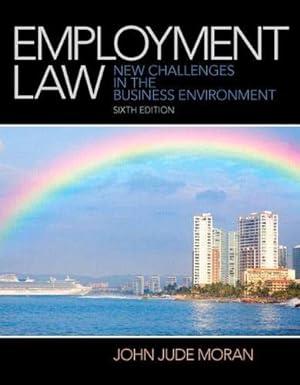Question
A tortious interference with a contract happens when a person who is not a party to a contract somehow influences one of the contract parties
A tortious interference with a contract happens when a person who is not a party to a contract somehow influences one of the contract parties to breach the contract. This only applies where there is a written contract between two or more parties. Consider the following example of tortious interference with a contract: Moonshine Coffeehouse Inc. and Aromatic Farms have a longstanding exclusive contract for the production and delivery of their "triple A" moonshine infused coffee beans. Their contract calls for the delivery of all beans produced domestic and foreign on Aromatic Farm's to Moonshines distribution warehouses for processing and redelivery to Moonshines Coffeehouses. The parties agree that the price per pallet will be $3000 with guarantee of 4000 pallet minimum. MJGreen House, Inc. a competitor of Aromatic approaches Moonshine and informs them that Aromatic is undercutting Moonshine by withholding 10% of their worldwide farm production for sale to its competitor coffeehouse Star Tracks Inc. for $2000 per pallet. Moonshine Coffeehouse Inc. as a result of this information cancels the contract with Aromatic refusing to purchase any further pallets from Aromatic unless Aromatic provides the entire farm yield as agreed. Would Aromatic have standing to sue MJGreen House, Inc. for tortious interference with contract because MJGreen's actions made Moonshine decide to breach the contract? What would Aromatic have to prove to be able to hold MJGreen liable for tortious interference with the contract?
USING THE FOLLOWING FORMAT ANALYZE THE CASE STUDY
IRAC/CRAC
What is it?
Issue, Rule, Analysis, Conclusion OR Conclusion, Rule, Analysis, Conclusion
Method for organizing legal analysis so that the reader can follow your argument
Especially helpful in writing exams (IRAC) and legal memos (CRAC).
How to do it?
As an example, we will look at whether someone can sue for battery as a result of inhaling
second-hand smoke. The issue we will look at is whether there is contact, which is required for a
battery claim.
Issue
First state the question or problem that you are trying to answer (what might bring the parties
into court). This can be in the form of a question or a statement depending on what your reader
prefers. Examples:
o "There is an issue as to whether contact occurred when the plaintiff inhaled the secondhand
smoke."
o "Does contact occur when one inhales second-hand smoke created by another?"
However, in legal memos, one may state the conclusion up front (in case the reader is too busy
to read through the entire analysis. Some professors also prefer that you state the conclusion
up front.
Rule
State the rule or legal principle. This may take the form of stating the elements required for a
prima facie case.
o "The prima facie case for battery requires the following elements: an act, intent,
contact, causation, and harm."
Some professors do not want you to explicitly state the rule (i.e., "The rule is..."). Rather, they
prefer that you imply it in your answer. In other words, cut to the chase by focusing your rule
statement on the part of the rule or element that is at issue.
o "The offense of battery requires contact with the plaintiff's person."
Analysis
This is where you state your evidence and explain how you will arrive at your conclusion. You
may cite other cases, discuss policy implications, and discuss (discount?) cases that run counter
to your conclusion.
Make sure that you weigh both sides and make counterarguments where appropriate.
Use case law, analogizing and distinguishing, and policy (for example, the goals of tort law) to
work your way to a conclusion.
o "In Howe v. Ahn, the court held that noxious bus fumes inhaled by a passerby constitute
harmful and offensive contact. Although the court has not extended this holding to a
case involving second-hand smoke, numerous cases have likened second-hand smoke to
air pollution (for example, Fox v. Abernathy). Policy considerations also favor finding
contact in the present case. If one can prove harm as a result of inhaling second-hand
smoke, it is better for the smoker to compensate the victim than burden the state."
Conclusion:
Step by Step Solution
There are 3 Steps involved in it
Step: 1

Get Instant Access to Expert-Tailored Solutions
See step-by-step solutions with expert insights and AI powered tools for academic success
Step: 2

Step: 3

Ace Your Homework with AI
Get the answers you need in no time with our AI-driven, step-by-step assistance
Get Started


